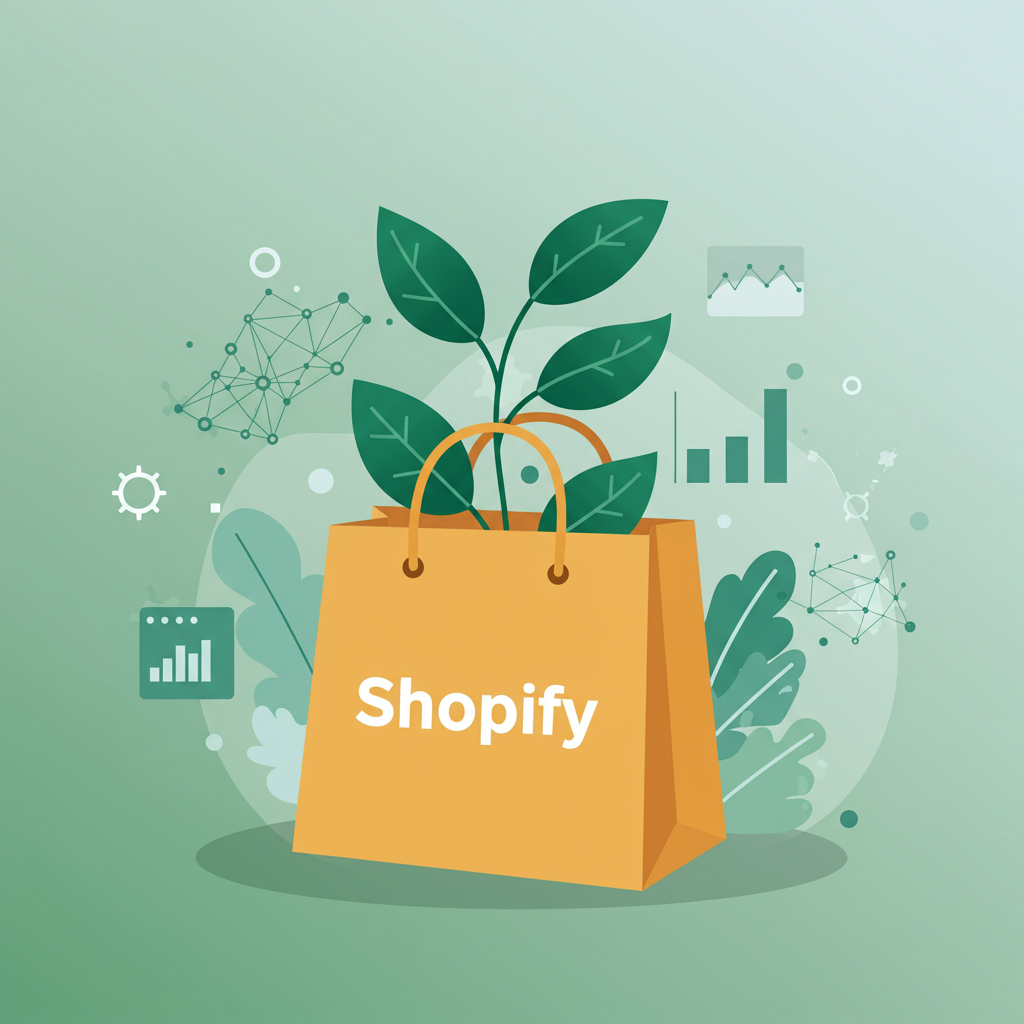Discover how leveraging Artificial Intelligence can transform your Shopify store into an eco-friendly powerhouse, reducing waste and boosting efficiency.
As a dedicated advocate for responsible business, I’ve spent considerable time exploring how we can make e-commerce not just profitable, but also profoundly sustainable.
The rapid growth of online shopping, while convenient, has unfortunately brought with it significant environmental challenges, particularly concerning waste and resource consumption.
From excessive packaging to inefficient logistics and high return rates, our current e-commerce models often contribute to a linear economy that extracts, makes, uses, and disposes.
But what if I told you there’s a powerful ally ready to help us pivot towards a more circular, sustainable future? That ally is Artificial Intelligence.
My focus today is on how Shopify merchants, like you, can harness the incredible capabilities of AI to reduce their environmental footprint and simultaneously optimize their operations.
I believe that sustainability isn’t just a moral imperative; it’s a smart business strategy that can lead to significant cost savings and enhanced brand loyalty.
Let’s dive into the practical ways AI can revolutionize your Shopify store, starting with one of the biggest culprits of waste: inventory management.
Traditional inventory forecasting often relies on historical data and manual adjustments, which can lead to either overstocking or understocking.
Overstocking means holding excess products that might expire, become obsolete, or simply take up valuable warehouse space, eventually leading to disposal.
Understocking, on the other hand, can result in missed sales opportunities and frustrated customers, sometimes leading to expedited, less sustainable shipping methods.
This is where AI truly shines. AI-powered demand forecasting tools can analyze vast datasets, including seasonal trends, marketing campaigns, economic indicators, and even social media sentiment.
By processing these complex variables, AI can predict demand with remarkable accuracy, allowing you to order precisely what you need, when you need it.
This precision dramatically reduces the likelihood of dead stock, minimizing waste from unsold goods and freeing up capital that would otherwise be tied up in inventory.
Beyond inventory, consider the vast network of your supply chain. Every step, from sourcing raw materials to delivering the final product, has an environmental impact.
AI can optimize logistics by identifying the most efficient shipping routes, consolidating shipments, and even recommending suppliers with stronger sustainability credentials.
Imagine AI analyzing your supplier network, flagging those with high carbon emissions or questionable labor practices, and suggesting greener alternatives.
This level of insight allows you to build a more resilient and environmentally responsible supply chain, reducing fuel consumption and overall carbon footprint.
Another significant area for waste reduction is packaging. We’ve all received a small item in an unnecessarily large box filled with excessive void fill.
AI can help here too. By analyzing product dimensions and order combinations, AI algorithms can recommend the optimal packaging size and material, minimizing waste and shipping volume.
Then there’s the pervasive issue of product returns. Returns are not only a logistical nightmare but also a major source of waste, as many returned items cannot be resold.
AI can play a crucial role in preventing returns before they even happen. How? Through enhanced product personalization and accurate sizing recommendations.
By analyzing customer data, purchase history, and even virtual try-on technologies, AI can help customers make more informed decisions, reducing the chances of a product not meeting expectations.
Furthermore, AI-powered chatbots and virtual assistants can provide instant, accurate answers to customer queries about products, materials, and fit.
This proactive customer service reduces the need for customers to order multiple sizes or colors ‘just in case,’ thereby cutting down on potential returns.
I also see immense potential in using AI to gain deeper insights into your store’s environmental performance. AI can process data from various sources to calculate your carbon footprint.
It can identify specific areas where your operations are most impactful, allowing you to prioritize your sustainability efforts for maximum effect.
So, how can you, as a Shopify merchant, start integrating AI into your sustainable practices? The Shopify App Store is an excellent starting point.
You’ll find apps for advanced demand forecasting, returns management, and even tools that help track your environmental impact.
My advice is to start small. Identify one area where you know waste is a problem – perhaps overstocking or high return rates – and explore an AI solution for that specific challenge.
The benefits extend beyond just environmental good. Implementing AI for sustainability can lead to significant cost reductions through optimized inventory and logistics.
It enhances your brand’s reputation, attracting a growing segment of environmentally conscious consumers who are willing to support businesses that align with their values.
Ultimately, I believe that integrating AI into your Shopify operations is not just about reducing waste; it’s about building a more efficient, resilient, and future-proof business.
It’s about transforming your store into a beacon of responsible commerce, proving that profitability and planetary well-being can indeed go hand-in-hand.
What do you think about the potential of AI to revolutionize sustainable e-commerce for Shopify merchants? I’d love to hear your thoughts.
Let’s embrace these powerful tools and collectively move towards a greener, more prosperous future for online retail.






